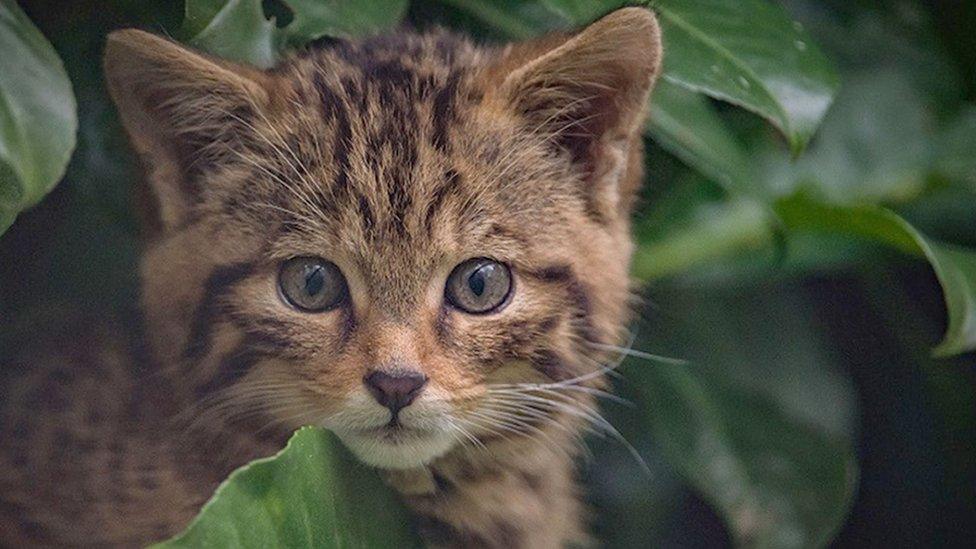Baby Scottish wildcat and the UK's other rarest animals
- Published
- comments

A rare Scottish wildcat, born at Chester Zoo, has been captured on camera for the first time.
Zoo officials say the female kitten could offer a "lifeline for the species".
Wildcats, also known as Highland tigers, are Britain's rarest mammals and as few as 100 are thought to remain in the UK.
These cats aren't the only rare animals that live in the UK so here are a look at some of the others.
Red Squirrel
WATCH: Which animal is helping the red squirrel? Victoria Gill reports (April 2018)
The UK red squirrel has been fighting for survival for a while now, although there have been more sightings in the last few years.
The invasion of the American grey squirrel has pushed its red relative out of most areas.
The competition for food and shelter have lowered numbers.
There are now only 140,000 red squirrels left in the UK, according to The Wildlife Trust, and they are mainly found in Northern England and Scotland.
Turtle dove
The turtle dove can be spotted in the summertime but their numbers have dropped 98% since 1970 according to The Woodland Trust,
Their wings earned them their name because the black and brown plumage looks like a turtle's shell.
Conservationists are worried that the species could disappear from the country entirely.
Experts think the reason for the drop in turtle doves numbers is changes in farming practices and hunting as the birds cross the Mediterranean on migration.
Natterjack toad
Watch Ayshah's report
The rare Natterjack toad is found in a few parts of England and Scotland.
It prefers shallow pools or sand dunes but can also be found in heaths and marshes.
Sometimes known as the running toad the Natterjack tends to walk or run rather than jump.
The amphibians mainly come out at night, and in the spring the males all sing together to attract females.
Despite the females being able to lay up to 7,500 eggs in a season, their numbers have yet to improve.
Water vole
Meet one of Britain's most endangered mammals
The water vole is the largest British vole and one of the UK's most endangered species.
They prefer lowland areas, slow-flowing, deep water such as canals, lakes and streams.
The rodents form a complicated system of underground tunnels and nesting chambers.
They look similar to their cousins the common rat.
Puffins
WATCH: Can one island save puffins from extinction? (July 2018)
Puffins spend most of their time out at sea and feed on small fish.
Their beak changes colour during the year and they can not only fly, they are really good swimmers too.
But their numbers are decreasing because of lack of food
Experts are worried that the little creatures might disappear altogether.
